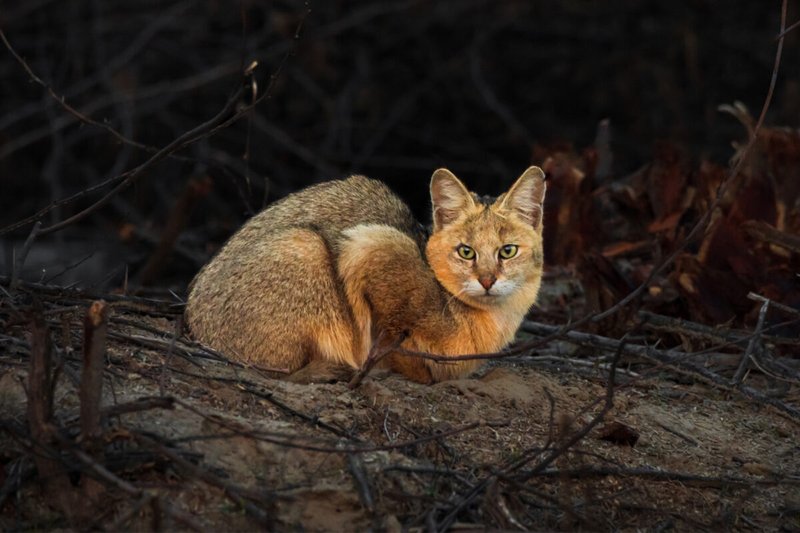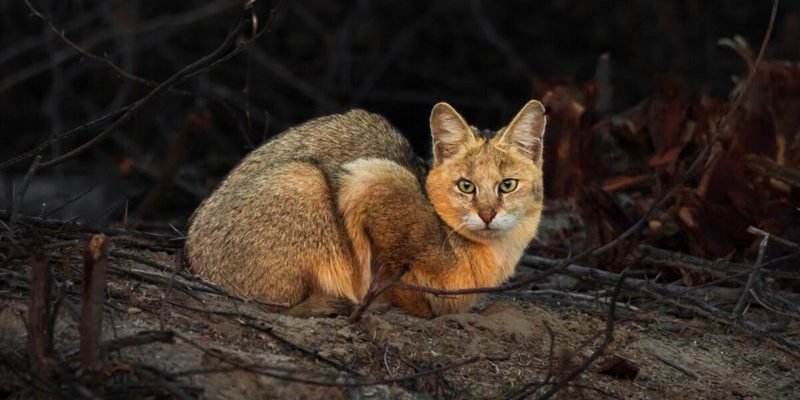
The truth is, concern for the jungle cat’s existence is growing. Habitat loss, hunting, and human encroachment are just a few threats facing this resilient species. Think of the jungle cat like a small, curled-up leaf; it may seem sturdy, but the right amount of pressure can leave it crumbled. Let’s dive into the current status of the jungle cat and explore what global conservation efforts are being made to protect it.
Understanding the Jungle Cat
The jungle cat (Felis chaus) is often mistaken for a domestic cat, but it carries the wild spirit of a true predator. These cats are typically found in marshes, grasslands, and scrub forests, mainly in Asia but also in parts of Africa. They have a slender body, long legs, and a short tail, which makes them adept hunters in their natural habitat.
Jungle cats are known for their adaptability. They can thrive in various environments but prefer areas with dense vegetation for shelter and hunting. Their diet mainly consists of small mammals, birds, and even reptiles. This flexibility allows them to maintain a stable population in their preferred areas, but their survival is now threatened due to several environmental changes.
You might be wondering, how do these cats fit into their ecosystem? They help control the population of rodents and other small animals, which can otherwise become pests. By keeping these populations in check, jungle cats support the health of their habitats.
Current Conservation Status
So, is the jungle cat endangered? According to the IUCN Red List, the jungle cat is classified as “Least Concern.” While this sounds reassuring, it doesn’t tell the full story. In some regions, their populations are declining due to several threats, and they face a precarious future in certain areas.
The main threats to jungle cats include habitat destruction due to agricultural expansion, urban development, and deforestation. When their homes are destroyed, these cats are forced into smaller areas, which can lead to inbreeding and reduced genetic diversity. Furthermore, they often come into conflict with humans, leading to hunting and persecution.
While jungle cats aren’t globally endangered yet, their declining numbers in some areas highlight the need for ongoing conservation efforts. We must pay attention to these trends to prevent future declines before it’s too late.
Major Threats to Jungle Cats
Several factors threaten the survival of jungle cats. Here’s a closer look at some of the major issues:
- Habitat Loss: As cities expand and agriculture intensifies, jungle cats lose their homes. They rely on dense vegetation for hunting, and without it, they struggle to find food and shelter.
- Human Conflict: Jungle cats sometimes prey on livestock, leading farmers to view them as threats. Unfortunately, this can result in the hunting of these cats to protect livestock.
- Pollution: Chemical run-off from agriculture can poison the water and land, impacting the prey animals that jungle cats rely on for food, which can lead to malnutrition or death.
- Climate Change: Changes in climate affect prey availability and habitat conditions. As temperatures rise and weather patterns shift, jungle cats may find suitable habitats less and less available.
Understanding these threats helps us see the larger picture of why conservation efforts are so vital.
Conservation Efforts and Success Stories
Despite the challenges, there are promising conservation efforts underway to protect jungle cats. Various organizations and governments are working together to create protected areas that focus on preserving the natural habitats of these fascinating animals. Here are a few noteworthy efforts:
1. Protected Areas: Establishing national parks and wildlife reserves helps ensure that jungle cats have safe spaces to live and thrive. These areas not only benefit the cats but also protect the rich biodiversity within those ecosystems.
2. Awareness Campaigns: Raising public awareness about the importance of jungle cats and their role in the ecosystem helps change perceptions. When people understand the benefits of keeping these cats safe, they’re more likely to support conservation efforts.
3. Research and Monitoring: Ongoing research helps scientists understand the behavior, population dynamics, and health of jungle cat populations. By monitoring these factors, conservationists can respond quickly to any emerging threats.
4. Community Involvement: Engaging local communities in conservation efforts is essential. When people are involved, there’s a greater chance of success. This might include education programs about sustainable farming practices that coexist with wildlife.
Conservation isn’t just about saving one species; it’s about preserving entire ecosystems for future generations.
How You Can Help
You don’t have to be a scientist or a conservationist to make a difference for jungle cats and their habitats. Here are a few simple ways you can pitch in:
- Educate Yourself: Learning about jungle cats and their ecosystems helps spread awareness. Share what you learn with others!
- Support Conservation Organizations: Donating to wildlife organizations can help fund important initiatives aimed at protecting jungle cats.
- Advocate for Wildlife Protection: Speak up for policies and measures that protect wildlife and their habitats. Contact local representatives and express your support.
- Practice Ethical Consumerism: Choose sustainable products that don’t contribute to habitat destruction or pollution.
Every small action counts in the grand scheme of conservation.
The Road Ahead for Jungle Cats
As we look to the future of jungle cats, the situation remains a mixed bag of hope and challenges. To keep these magnificent creatures from slipping into endangerment, ongoing efforts are essential. It requires collaboration among governments, communities, conservationists, and everyday people.
Here’s the thing: protecting jungle cats is about more than just saving one species. It’s about safeguarding the biodiversity of our planet, ensuring ecosystems remain balanced, and preserving the natural world for future generations.
In conclusion, while the jungle cat is currently classified as “Least Concern,” the threats it faces are real and persistent. It’s crucial that we continue to support conservation efforts and spread awareness about the importance of these cats—not just for their sake, but for the health of our planet as a whole. By working together, we can help ensure that the jungle cat stays not just a part of our ecosystems, but a thriving one.

